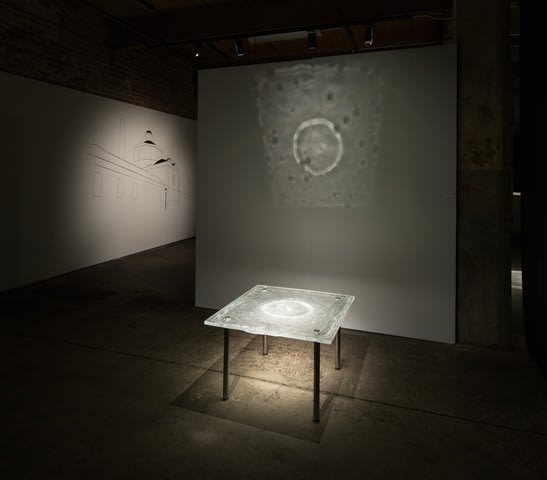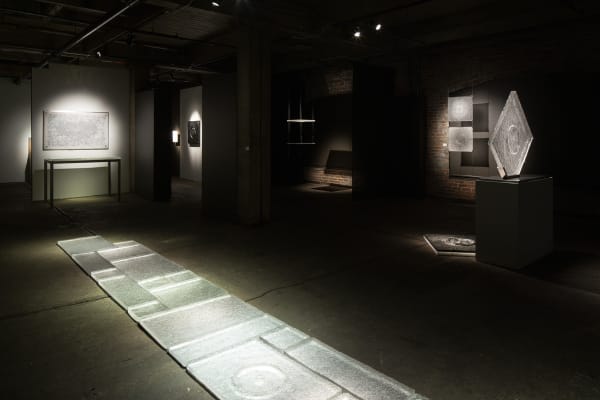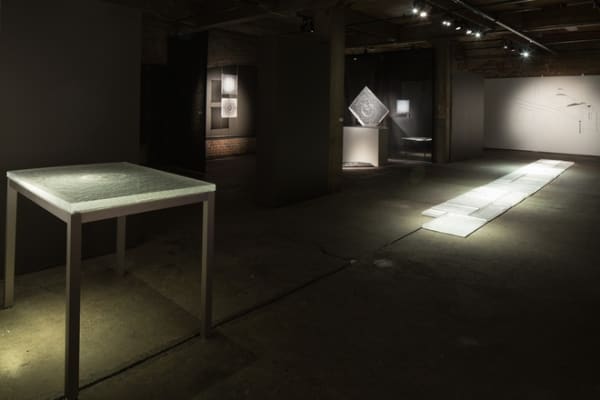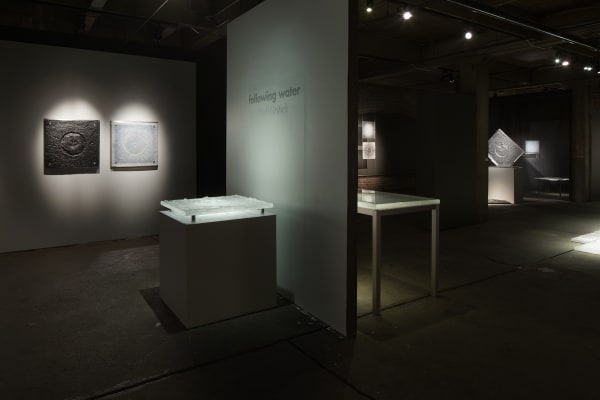by Richard Speer
In his poem "Sympathy," Paul Laurence Dunbar imagined what a caged bird feels "when the wind stirs soft through the springing grass/and the river flows like a stream of glass..." Such a stream is reimagined in Austrian artist Rudi Gritsch's exhibition, "Following Water." Gritsch charts the course of a river born in the mountains above La Granja, Spain, as it flows into the town of San Ildefonso, filling a lake in the historic royal gardens, then snaking under city streets and emerging at the foot of the Royal Glass Factory. Manholes provide access to river's underground stretch, and the manholes' covers provide Gritsch the exhibition's visual leitmotif —a circle within a circle within a square—that he deploys in a series of bravura variations.
In the sculpture parts of personality (all 2015), metal rods connect two kiln-formed rectangles, creating a thin sliver of overlap between them. A plane seemingly hovers over another plane inselective retention and a sense of connection, the shapes suspended by metal cords. The nubby textures and delicious grape and violet hues in two sides of "The Same" contrast dramatically with the piece installed beside it, inside prospect(s), with its smooth expanses of milky white shot through with myriad bubbles. The show's most ambitious piece, the street from cause to effect, is an abstracted roadway-cum-waterway made of thirty kiln-cast tiles, which glow eerily beneath precise directional lighting. Viewers are encouraged to slip off their shoes and walk down the nearly 28-foot path toward the outlined cityscape at its terminus. The work evokes the mystical yellow-brick road of Oz, but this road represents both the pavement and the unseen river flowing underfoot, affording viewers a messianic opportunity to walk on water.
Gritsch deftly counterbalances the formalism of his geometric iterations with sensual surfaces that allude to corporeal, even erotic, under-pinnings. There is more than a passing resemblance between the button-centered manhole motif and the centrality and protrusion of a cervix or nipple. Without resorting to anatomical reductivism, the layered circles and squares suggest the anthropomorphic possibilities imbued in ideal forms, à la Leonardo da Vinci's Vitruvian Man. Finally and quite effectively, a slide show in a small side gallery chronicles how the artworks were created. In keeping with the more explicitly educational focus Bullseye has recently adopted, the presentation explains materials and themes without coming across as remedial or overtly didactic. One wishes more galleries and museums could similarly finesse their exhibitions' backstories, while still allowing for the autonomy of viewers' responses.
Source Link: Art Ltd. Magazine





